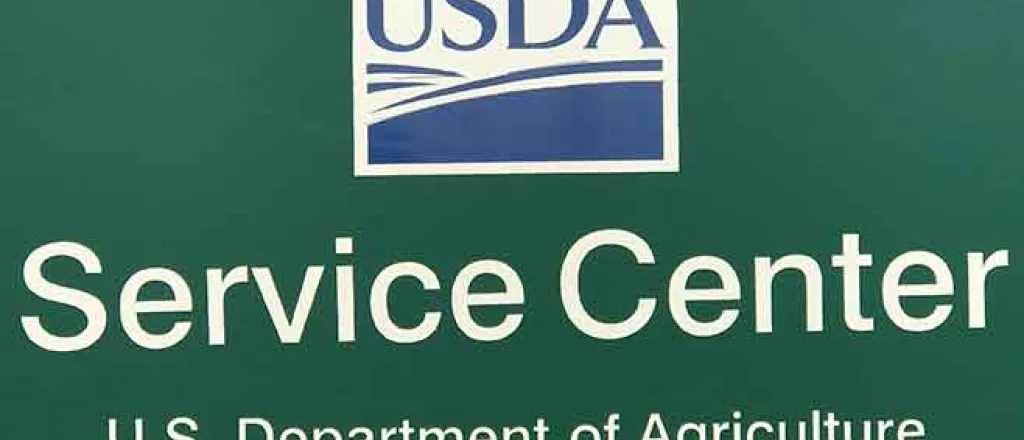
USDA Update – September 15, 2020
IMPORTANT DATES TO REMEMBER:
- CRP EMERGENCY GRAZING and HAYING - READ BELOW
- 2020 PLC YIELD UPDATE – Deadline September 30, 2020
- LFP – Signup ends January 30, 2021
Disclaimer: Information in this UPDATE is pertinent to Kiowa County FSA only. Producers reading this and that do not have FSA interest in Kiowa County are advised to contact their local FSA Office.
DROUGHT MONITOR
There weren’t many changes for this area on the Drought Monitor as the central portion of the county remains in a D4 rating. I would imagine this week’s drought map may have changes with the moisture received in some portions of the state. Here at the office there was 24 hundredths recorded for precipitation and portions of the west end received some good wet snow. Drilling wheat will be the task for most of the area these next few weeks.
CRP EMERGENCY HAYING and GRAZING
The office received notification Monday, September 14, 2020; that the requirement to remove cattle for 30 days prior to the 1st frost date has been waived for calendar year 2020. Therefore, producers who have made requests to graze CRP after October 24 can begin grazing prior to that date; once they receive notification that the request has been approved. Producers who are currently grazing CRP – are not required to remove the livestock for the 30 days, however if at any time the existing cover cannot support continued grazing the livestock must be removed.
Grazing duration cannot exceed 90 days in a calendar year. The CRP acreage may be grazed at 100 percent of the stocking rate. Emergency grazing is not limited and does not require 25% to be left ungrazed after primary nesting season. NRCS may determine contract specific stocking rates and grazing duration based on the condition of the cover.
Emergency grazing must be completed by the earlier of the following:
- Grazing date established by NRCS
- Existing cover reaches minimum grazing height
- Drought conditions improve and grazing is no longer authorized
- December 31, 2020
Emergency haying cannot exceed 60 days in a calendar year and the hay must be removed within 15 days of being baled. Haying must be completed by December 31, 2020. In Kiowa county, producers can only hay 50% of the contract acreage. If NRCS determines that the acreage cannot support haying – the request will be denied.
Emergency haying must be completed by the earlier of the following:
- 60 days
- Drought conditions improve
- December 31, 2020
There are many questions that are unanswered; but once we receive answers, we’ll be getting that information out to producers. But, the requirement to remove the livestock for 30 days - is no longer a requirement.
MAINTAINING EXISTING CRP COVER
Reminder to CRP producers, it is your responsibility to determine if the permanent cover can continue to sustain the grazing livestock; with the continued drought conditions the permanent cover may not justify continued grazing. When producers submitted the request to graze CRP, the grazing plan that was sent to both the grazing producer and the CRP producer is only a tool for stocking rates.
There is a statement on the grazing plan which is below and needs to be adhered to.
- The stocking rate computed is based on estimated available forage. The number of head and days grazed can be adjusted (increased/decreased) as long as the desired outcome is achieved, and the vegetative cover is maintained. If the number of head is increased, then the days grazed should decrease. It is the responsibility of the producer to adjust the stocking rate (#head or days grazed) and ensure livestock are removed in a timely manner.
Emergency grazing must be completed by the earlier of:
- The days listed on the NRCS grazing plan;
- The existing cover reaches minimum height of 4 inches; or
- Drought conditions improve
- December 31, 2020
If the CRP producer determines that grazing must cease as the existing cover cannot sustain continued grazing; the producer grazing must remove the livestock. Don’t jeopardize compliance of your CRP contract. All compliance issues are handled by the FSA County Committee and will involve payment reductions to the annual rental payment.
One-Time PLC Yield Updates – Deadline September 30
Farm owners have a one-time opportunity to update PLC yields of covered commodities on the farm, regardless of Agriculture Risk Coverage (ARC) and Price Loss Coverage (PLC)program election. The deadline to request a PLC yield update is September 30, 2020.
The updated yield will be equal to 90 percent of the average yield per planted acre in crop years 2013-2017 (excluding any year where the applicable covered commodity was not planted), subject to the ratio obtained by dividing the 2008-2012 average national yield by the 2013-2017 average national yield for the covered commodity. If the reported yield in any year is less than 75 percent of the 2013-2017 average county yield, then the yield will be substituted with 75 percent of the county average yield.
The chart below provides the ratio obtained by dividing the 2008-2012 average national yield by the 2013-2017 average national yield for each covered commodity.
Covered Commodity | National Yield Factor |
Barley | 0.9437 |
Corn | 0.9000 |
Grain Sorghum | 0.9077 |
Soybeans | 0.9000 |
Sunflower Seed | 0.9396 |
Wheat | 0.9545 |
It is the owner’s choice whether to update or keep existing PLC yields. If a yield update is not made, then no action is required to maintain the existing PLC yield. An existing or updated PLC yield will be maintained and effective for crop years 2020 through 2023 (life of the 2018 Farm Bill).
PLC yields may be updated on a covered commodity-by-covered commodity basis using FSA form CCC-867.
For more information, reference resources and decision tools, visit farmers.gov/arc-plc. Contact your local Farm Service Agency Office for assistance – farmers.gov/service-center-locator.
FAILED ACRES
Producers who have had spring seeded crops released from crop insurance need to be sure to report those failed acres to the FSA Office also. Producers need to submit the crop insurance appraisal and complete an CCC-576, Notice of loss (not for NAP). If the crop is uninsured or uninsurable producers should report the failed acres to the FSA office prior to destroying the crop. Destroying a crop without a crop appraisal or a verification the crop was planted will prohibit FSA to grant failed acreage credit.
















